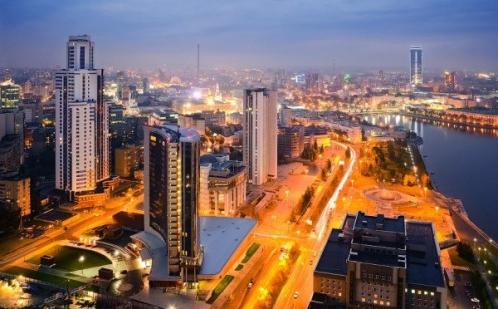This place is well known and loved by many residents of the Ural capital. From here, from the point where the Historical Square is located, Yekaterinburg began. But it was founded not at all as a city in the usual sense. In the spring of 1723, by decree of Peter the Great, a cast iron and iron smelting plant was founded at this place. The growing Russian state needed metal for guns and much more.
What Historic Square looks like today
The indigenous inhabitants of the Ural capital most often call this place a little familiar - “Plotinka”. This name comes from a dam blocking the Iset River and forming the City Pond. This is the oldest hydraulic structure erected in the same distant 1723, from which the age of Yekaterinburg is calculated. Its purpose was completely utilitarian, it provided water to a metallurgical plant. But this is in the past, the cast iron in this place has not been melted for a long time, and the City Pond adorns the Historical Square. Citizens love to walk here and spend their free time. This place became a pedestrian zone at the behest of architects and city authorities. It took a lot of work to bring this place into a civilized form. The historical square, with a total area of more than 8 hectares, is located on both banks of Iset. The territory is planned symmetrically to the museum and memorial zones. On the right bank, in the area of the retaining wall, there is a kind of "Rock Garden". This is a permanent exhibition of Ural minerals. The open-air exhibition allows you to get acquainted with the natural and geological wealth of the Urals. Monolithic blocks of granite, dolomite and marble were brought to the Historical Square from different places of the Ural region.

And on the left bank of Iset there is a museum zone. Its basis is made up of buildings and structures remaining from the old Yekaterinburg. Here is the equipment that worked at the Ural enterprises in the nineteenth century. The fate of the preserved buildings of the old metallurgical plant - the very one from which Yekaterinburg began, turned out to be interesting. Now it houses the Museum of Fine Arts and private. expositions of the Museum of Local Lore. And from the old
water tower, a rather interesting Museum of blacksmithing turned out to be a level, the level of which local craftsmen have always been famous for. Monuments were also erected here for two famous Ural writers - P.P. Bazhov and D.N. Mamin-Sibiryak. Among other things, Historical Square is a traditional venue for citywide events, festivities and holidays. They pass on both banks of Iset.
How to find Historical Square. Yekaterinburg, city map
If you were in the capital of the Urals for the first time, then finding this place is not difficult. To do this, just look at the map of the city. At this point, the City Pond abruptly ends with a straight line. This is the very “Plotinka”, with the construction of which the history of Yekaterinburg began . From the railway station you can walk here in a leisurely step for half an hour.